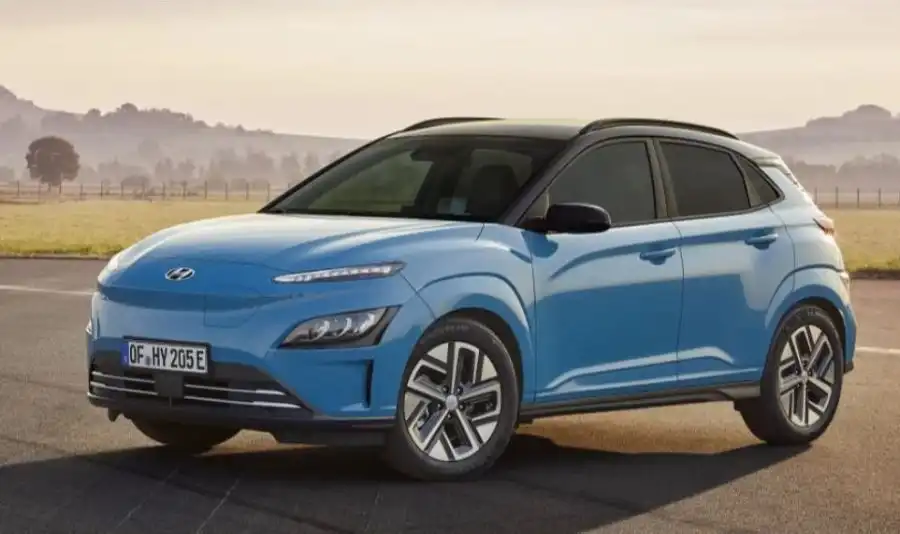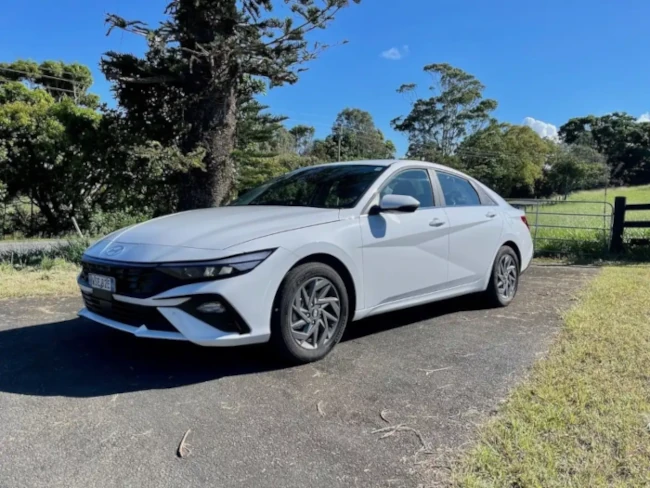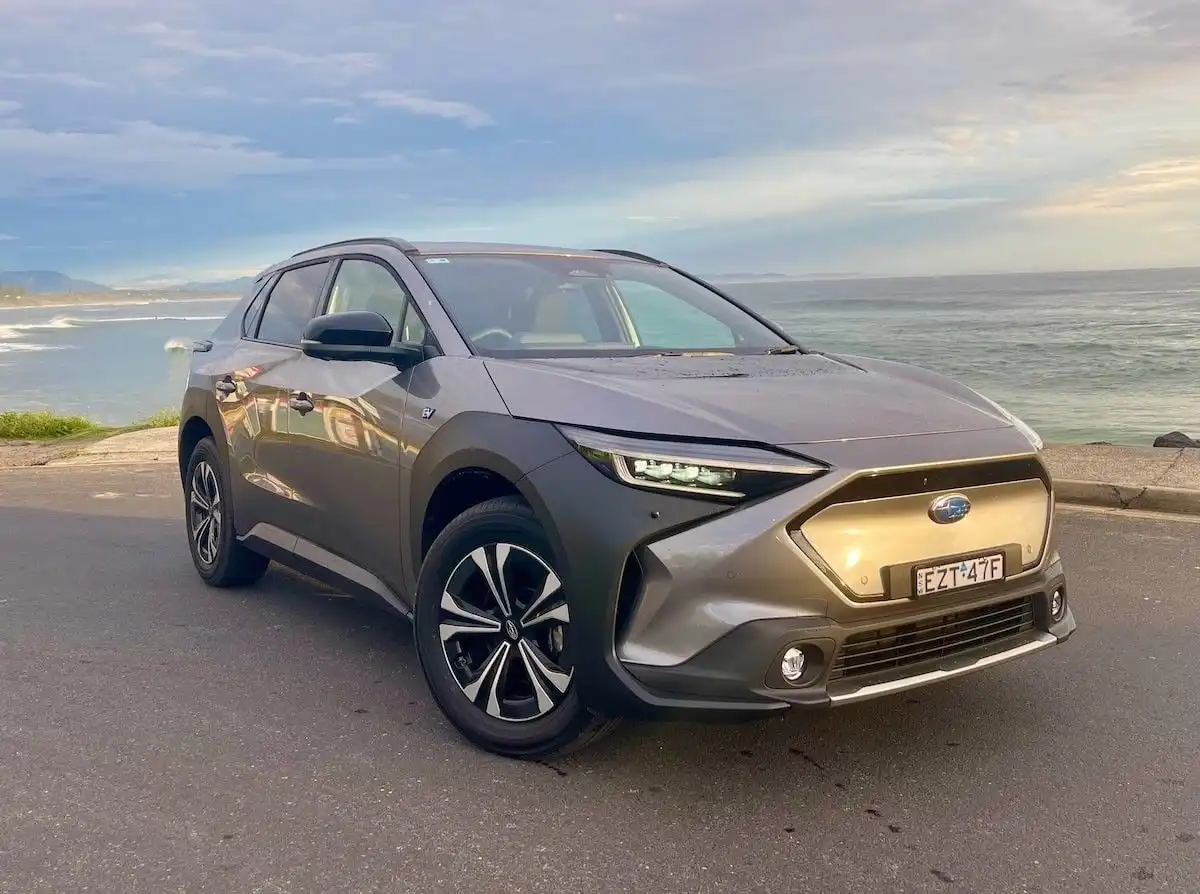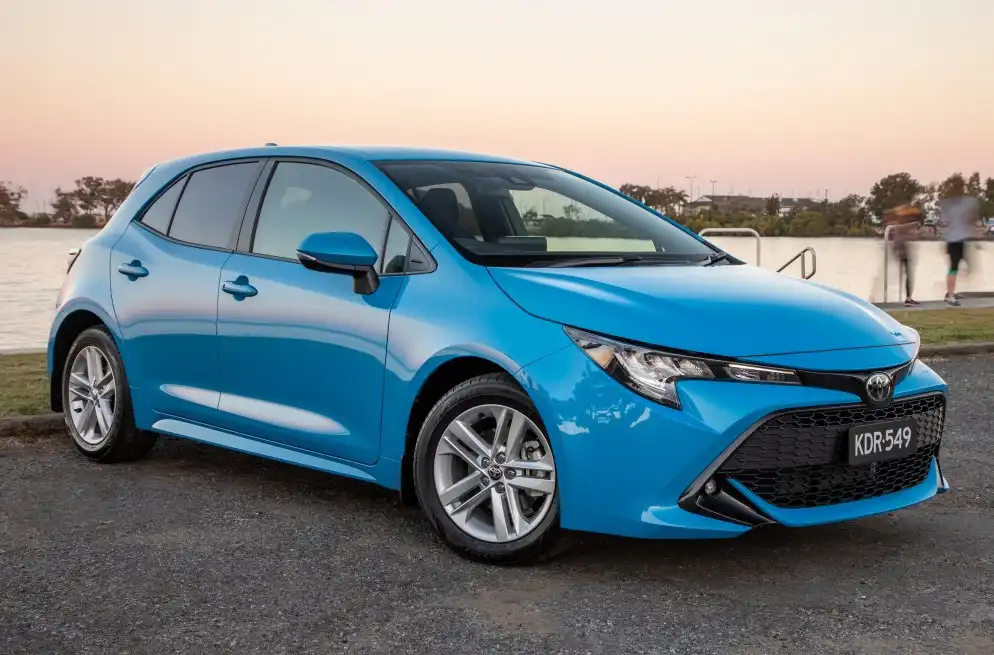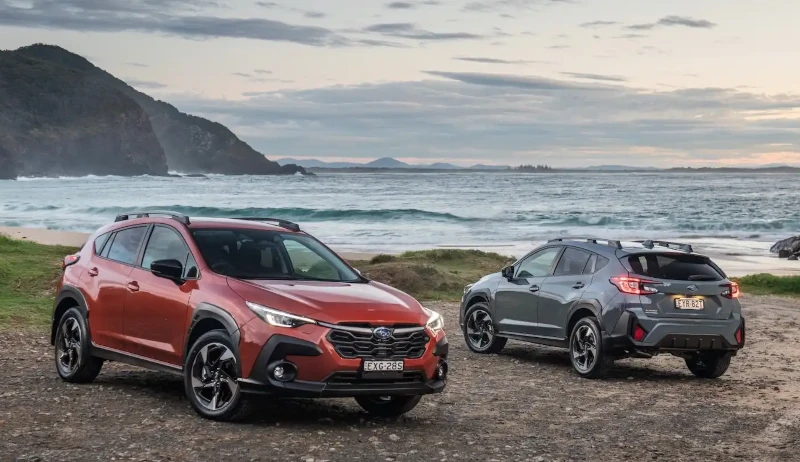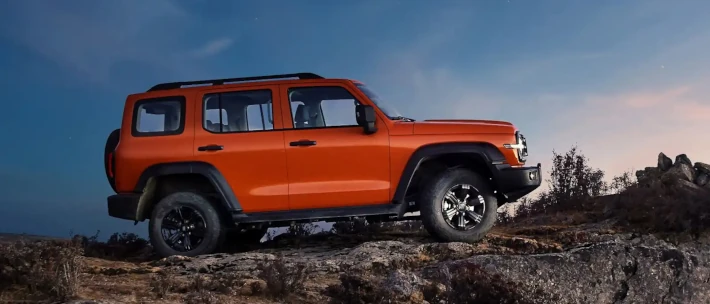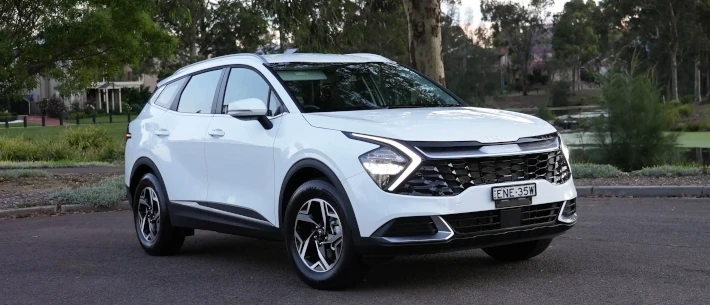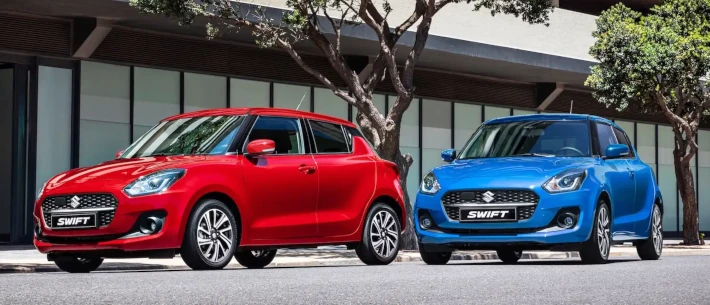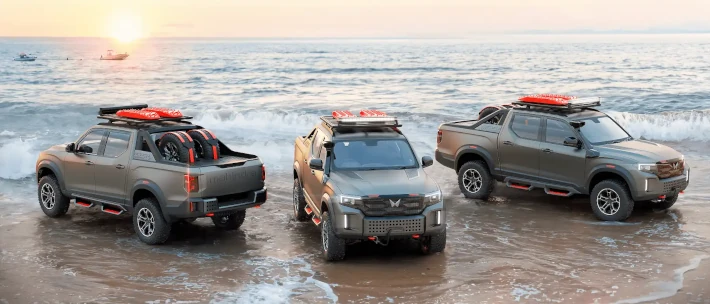After all, competing against the likes of the Mazda CX-30, Subaru XV, Toyota C-HR, Honda HR-V and the Nissan Juke isn’t easy, so standing out from the crowd with some attention-grabbing style doesn’t hurt.
The real question, though, is just how much substance does the Hyundai Kona offer underneath that unique styling? Fierce competition means that the Kona needs to perform when it comes to equipment lists, driving comfort, practicality and safety, so let’s put the Kona under the microscope to find out.
Starting Price: $26,660
OnlineAuto Savings: Enquire now
Hyundai Kona - ACTIVE (ELITE ELECTRIC STD RANGE) Specifications
| Model Date | 2022 |
| Make | HYUNDAI |
| Model | KONA |
| Series | OS.V4 MY22 |
| Variant | ELITE ELECTRIC STD RANGE |
| Body | 4D WAGON |
| Fuel type | ELECTRIC |
| Transmission | 1 SP AUTOMATIC |
| Drive | FWD |
| Engine | ELEC |
| Engine capacity | 0 |
| Engine configuration | NOT APPLICABLE / 0 valves |
| Engine RPM | 0 / 0 |
| Cylinders | |
| Torque | 395 |
| KW | 100 |
| Fuel tank size | 0.0 |
| Fuel usage specs | 0.0 / 0.0 |
| CO2 | 5 |
| ANCAP security rating | 5 |
For more details and other variants, check Hyundai Kona car page.
Buying a new car? We can save you time and money.
Get in touch with one of our Car Buying Specialists today.
Request a quoteHow Much Does It Cost?
The Hyundai Kona lineup kicks off at $26,660 for the entry-level 2.0, with the Active 2.0 and Elite 2.0 priced at $28,200 and $31,600 respectively.
Stepping up to the Kona N Line 1.6T brings the price tag to $36,300, while the Kona Highlander 2.0 is priced from $38,000. Finally, Hyundai’s range-topping Kona comes in the form of the N Line Premium 1.6T, which is priced from $42,400.
Keep in mind that these prices are subject to change, and do not include on-road costs.
How Much Can OnlineAuto Save You?
Using OnlineAuto’s car buying service, you could save by sourcing one of our car specialists to help you find the best value model for you.
What Features Does the Hyundai Kona Have?
The entry-level Kona 2.0 comes fitted with a set of 16-inch alloys, LED daytime running lamps, automatic headlights, an 8.0-inch infotainment system with Android Auto and Apple CarPlay, Qi wireless smartphone charging, six-speaker sound system, air conditioning, adaptive cruise control system, tyre pressure monitoring, reversing camera and a 4.2-inch digital instrument cluster that displays trip information and economy figures.
Moving to the Kona 2.0 Active adds a set of 17-inch alloys, as well as a number of interior improvements like leather upholstery, a leather steering wheel and gear lever, power-folding mirrors, rear parking sensors, rear privacy glass and fold-down armrest in the rear of the cabin.
The 2.0 Elite Kona variant adds a larger 10.25-inch infotainment system with DAB+ radio and satellite navigation, climate control, fog lights, automatic wipers, keyless entry and start, upgraded Harman Kardon sound system, as well as some safety features like blind-spot detection and rear cross-traffic alerts.
Moving to the Kona Highlander variant adds a set of LED head and tail lights, a 10.25-inch digital driving display, panoramic sunroof, 18-inch alloys, heads-up display, front parking sensors, 10-way adjustable seats with lumbar support, ambient lighting, heated and ventilated seats, heated rear seats and a heated steering wheel.
Finally, Hyundai’s flagship Kona, the N Line Premium gets a more powerful 1.6-litre turbocharged engine, multi-link sports suspension for the rear wheels, all-wheel drive system, as well as receiving the same features as the Highlander, with a two-tone roof replacing the sunroof.
Range Features:
- 16-inch alloys
- 8.0-inch infotainment system with Apple CarPlay & Android Auto
- Reversing camera
- Adaptive cruise control
- Automatic headlights
- LED daytime running lamps
- Six-speaker sound system
- 17-inch alloys (Active)
- Leather upholstery (Active)
- Rear parking sensors (Active)
- 10.25-inch infotainment system (Elite)
- Harman Kardon sound system (Elite)
- 18-inch alloys (Highlander)
- LED head & tail lights (Highlander)
- Heated and ventilated front seats (Highlander)
- Panoramic sunroof (Highlander)
- 10.25-inch digital driver’s display (Highlander)
- Sports suspension (N Line Premium)
- Multi-link rear suspension (N Line Premium)
- Sport seats (N Line Premium)
Hyundai Kona Colours
The Hyundai Kona range is available in a number of colour options, including Atlas White, Surfy Blue, Phantom Black, Dark Knight Grey, Ignite Flame Red, and Dive in Jeju Blue.
Is it Comfortable to Drive?
The Hyundai Kona is a high-riding compact SUV that, like most of its key competitors, is actually based on a hatchback platform that receives some added ride-height and SUV proportions. In the case of the Kona, the platform is provided by the i30 hatch, which is actually a great place to start.
As one of the leading hatches on the market, the i30 platform provides a heap of stability and a surprising amount of refinement, which is easy to notice with just a few minutes behind the wheel of the Kona.
As a result, the Kona is a great car to drive around town, offering a user-friendly and near effortless driving dynamic that lends itself perfectly to the less experienced behind the wheel. As commuter, the Kona’s platform is a great companion for daily driving, and hits the ground running when you put it through its paces in tight quarters and car parks.
Thanks to the short wheelbase, manoeuvring into tight spaces is a simple task, while the lightweight steering rack makes low-speed turning and traffic situations effortless.
The best cars make driving feel like a simple, effortless activity, and we can report that the Kona has been designed to an extremely high level in this regard, made better by the fact that Hyundai tunes its suspension for Australian roads. This means that the Kona feels every bit at home on the rough, undulated surfaces of a country B-road as it does on the smooth, sealed tarmac of the city.
Keep in mind that Hyundai offers two engines in the Kona, a 2.0-litre petrol and a smaller but more powerful 1.6-litre turbocharged petrol engine, the latter of which is significantly better to drive, but comes at a fairly hefty price premium.
The 1.6-litre turbo also receives a seven-speed dual-clutch transmission, which makes short work of gear shifts and makes them significantly smoother than the standard automatic fitted to entry-level models.
As a complete package, driving the Kona is proof that there is substance to match its funky styling, and remains a great option for younger drivers looking for an easy commuter and relaxing tourer for weekend adventures.
Buying a new car? We can save you time and money.
Get in touch with one of our Car Buying Specialists today.
Request a quoteIs it Practical and Spacious?
When it comes to sheer size and practicality, the Hyundai Kona - like all of its rivals in the compact SUV market - won’t meet everyone’s needs. From the outset, it’s important to note that the Kona’s platform doesn’t offer the space that a midsize platform does, and as a result, it’s more suited to small families that don’t require too much from the rear seats.
Once you’re looking at it through the appropriate lens, though, the Kona begins to shine as a fun-loving and somewhat practical compact SUV in some key areas.
The driving position is familiar to that of the i30 hatchback, meaning there’s a comfortable set of seats benefiting from an ergonomic cabin design, with the benefit of added ride height that offers some more visibility over the road than the hatch it’s based on. The cabin feels somewhat narrow, but overall there’s a heap of adjustment in the driving position, adequate shoulder room and even head room for even the tallest of drivers.
Practical elements in the front of the cabin include a pair of cup holders, a two-tiered storage area behind the gear lever with a pad for your smartphone, storage inside the compact folding armrest and some sizable door bins either side.
All up, the front of the cabin is a great place for a couple to commute or enjoy a weekend adventure, however, things go south when you move to the rear of the cabin.
The Kona’s second row of seats can, in theory, accommodate adults, but the clear lack of head and legroom means this is only an option for extremely short journeys. Kids up to their early teenage years will be perfectly happy in the second row, which also features a pair of ISOFIX anchors for child seats.
In terms of boot space, the Hyundai Kona has a boot rated at 374L, which expands to 1,156L with the rear-seats folded down. In the real world, this translates to a pair of suitcases, or a large supermarket run in the boot, with the added ability to squeeze long, bulky objects thanks to the flat-folding seats.
Is it Safe?
The Hyundai Kona has been awarded ANCAP’s maximum five-star safety rating, scoring 14.07 out of 16 for protection in the case of front impacts and a perfect 16 out of 16 for side impacts.
As standard, every member of the Kona family comes packaged with autonomous emergency braking with cyclist and pedestrian detection, as well as lane-keep and lane-follow assistance and curtain airbags.
Key safety features like blindspot monitoring and rear cross-traffic alerts are, unfortunately, reserved for higher-spec variants.
Is it Fuel Efficient?
The base Hyundai Kona returns a combined cycle fuel economy score of 6.2L per 100km, which is an impressive figure that matches what’s on offer in the most economical compact SUVs on the market.
Opting for the sporty 1.6-litre turbo N Line variant increases the fuel economy to 6.9L per 100km on a combined cycle.
Our Verdict: Is the Hyundai Kona Worth it?
While Hyundai’s latest Kona is guilty of making a bold statement in terms of its styling, thankfully, the Kona matches its looks with a sound platform that will prove a great companion for the right person or couple.
Like almost every compact SUV on the market, though, you need to be conscious of its limitations. If you don’t require a huge amount of space in the rear, though, the Kona is a breath of fresh air for the segment, and offers an enjoyable platform for city driving and weekend adventures alike.
As a result, we recommend adding the Hyundai Kona to your shortlist of compact SUVs, and on that note, if you’re in the market for a new car, you can get a free quote and see how much OnlineAuto can save you on your next car, or call us on 1300 719 925.
Five Specs You Need to Know
- Five-year, unlimited KM warranty
- Five-star ANCAP safety rating
- 15,000km service intervals for base model; 10,000km for turbo-petrol
- Fuel economy ranges from 6.2 - 6.9L per 100km
- 374L boot space; expands to 1,156L with seats folded
Pros
- Shared platform with i30 hatch offers comfort and refinement
- Generous equipment lists on base models
- Fun, spirited performance in turbo-petrol variant
Cons
- Prices for top-spec models
- Key safety features reserved for mid-spec variants
- Begging for a hybrid version - but there is an all-electric Kona
OnlineAuto Rating: 8/10
Hyundai Kona Competition
Hyundai Kona |
VS |
Mazda CX-30 |
| Subaru XV | ||
| Toyota C-HR | ||
| Honda HR-V | ||
| Nissan Juke |
Buying a new car? We can save you time and money.
Get in touch with one of our Car Buying Specialists today.
Request a quote